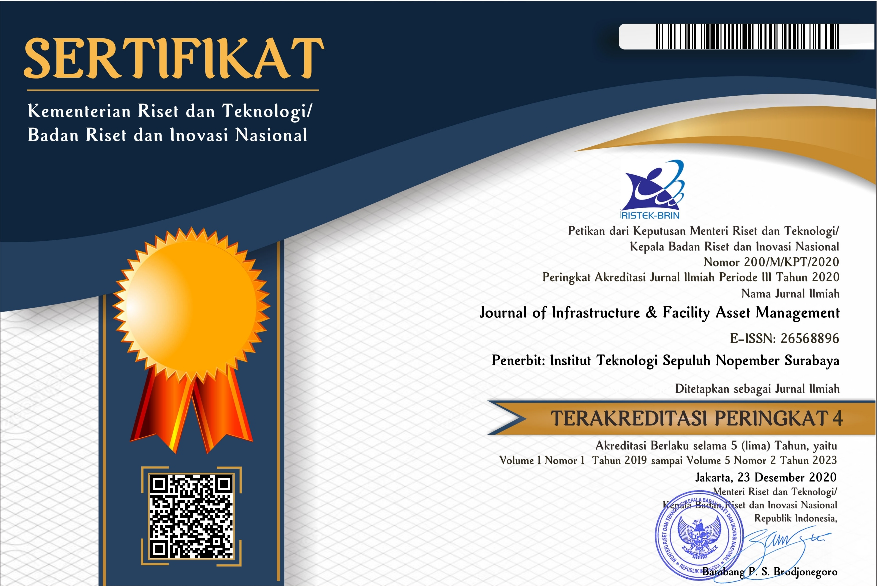Safe Neighborhood for Adolescent Girls: The Case of Urban Dense Kampong In Yogyakarta City Center
Abstract
Nowadays, the percentage of adolescents living in urban areas is increasing, including in Indonesia. Unfortunately, urban planning and design are very limited in involving the perspective of youth, including the provision of safe public space. This paper is concerned with understanding safe public spaces from the perspective of adolescent girls. This paper aims to explore whether the neighborhood, specifically its public spaces, according to the girls' perspective is safe enough by using a case study approach with the case of a dense organic neighborhood in the city of Yogyakarta, Kampong Code. The information was obtained by observation, forum group discussion (FGD), and also by conducting a safety walk with local adolescent girls. This paper found that although from a normative perspective, public spaces in the neighborhood are considered as not safe enough, because they were familiar with this condition, they tend to perceive that as a usual situation.
Full Text:
PDFReferences
CABE Space. (2004). “The Value of Public Spaces: How High Quality Parks and Public Spaces Create Economic, Social and Environmental Value”. Retrieved from https://www.designcouncil.org.uk/resources/report/value-public-spaces.
CABE Space. (2004). “The Value of Public Spaces: How High Quality Parks and Public Spaces Create Economic, Social and Environmental Value”. Retrieved from https://www.designcouncil.org.uk/resources/report/value-public-spaces.
Carmona, M., Magalhães, C. D., & Hammond, L. (2008). Public Space: The Management Dimension. Routledge. New York.
Gehl, J. (2011). Life Between Buildings: Using Public Space (Translated). Island Press. Washington DC
Gehl, J. (2011). Life Between Buildings: Using Public Space (Translated). Island Press. Washington DC
Jagori. (2011). “Building Safe and Inclusive Cities for Women: A Practical Guide”. Retrieved from http://jagori.org/wp-content/uploads/2006/01/Building-Safe-Inclusive-Cities-for-Women_A-Practical-Guide_2011.pdf
Johansson, K., Laflamme, L., & Eliasson, M. (2012). “Adolescents - Perceived Safety and Security in Public Space — A Swedish Focus Group Study with a Gender Perspective”. Young, 20(1), 69–88. https://doi.org/10.1177/110330881102000104.
Loukaitou-Sideris, A. (2006). “Is it safe to walk? Neighborhood safety and security considerations and their effects on walking”. Journal of Planning Literature, 20(3), 219–232. https://doi.org/10.1177/0885412205282770.
Mehta, V. (2014). “Evaluating Public Space”. Journal of Urban Design, Vol. 19, pp. 53–88”. https://doi.org/10.1080/13574809.2013.854698.
Ratnayake, R. (2013). “Fear of Crime in Urban Settings : Influence of Environmental Features, Presence of People and Social Variables. Bhúmi: The Planning Research Journal, 03(02), 30–43”. https://doi.org/10.4038/bhumi.v3i2.17.
Setiawan, B. (2010). Kampung Kota dan Kota Kampung: Potret Tujuh Kampung di Kota Jogja. Pusat Studi Lingkungan Hidup Universitas Gadjah Mada. Yogyakarta.
UWomen. (2017). Safe Cities and Safe Public Spaces. In Global Results Report. Retrieved from http://www.unwomen.org//media/headquarters/attachments/sections/library/
publications/2015/un women-safecities-brief_us-web (1).pdf?la=en&vs=953.
Wekerle, G. R., & Whitzman, C. (1995). Safe Cities: Guideline for Planning, Design, and Management. Van Nostrand Reinhold. New York.
Wekerle, G. R., & Whitzman, C. (1995). Safe Cities: Guideline for Planning, Design, and Management. Van Nostrand Reinhold. New York.
DOI: http://dx.doi.org/10.12962%2Fjifam.v3i2.13973
Refbacks
- There are currently no refbacks.
Visitor :
Flag Counter

Journal Of Infrastructure & Facility Asset Management by Institut Teknologi Sepuluh Nopember is licensed under a Creative Commons Attribution-ShareAlike 4.0 International License.





